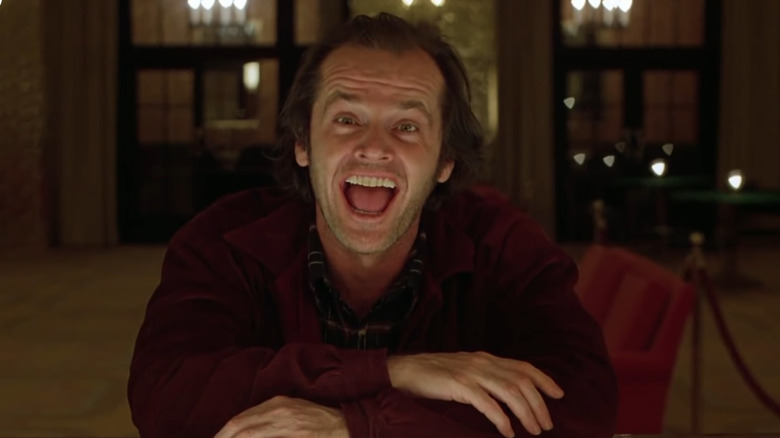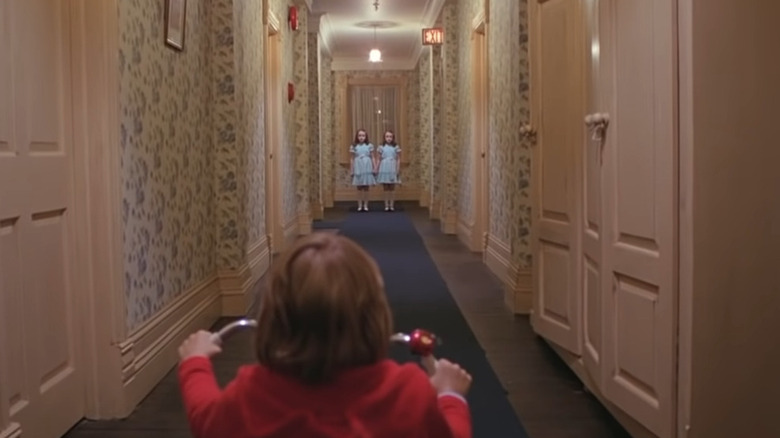The Shining: Did Kubrick Play A Sinister Trick On The Audience With Jack's Eyes?
It doesn't take much to convince audiences that Jack Torrance (Jack Nicholson) is one scary dude. The main antagonist of the 1980 Stanley Kubrick horror film "The Shining," Torrance's turn from a slightly irritable father to a crazed axe murderer remains one of cinema's most terrifying transformations. But one subtle element implemented into Jack Nicholson's performance, pointed out in a Twitter thread by Kubrick historian Filippo Ulivieri, opens the door to even more frightening implications.
The threads observe that in several of Torrance's scenes, he can be seen looking directly into the camera. Some glances are harder to pick up on than others, but they litter the film nonetheless. This could count as breaking the fourth wall, where characters purposefully acknowledge the audience, usually by looking directly into the camera. However, whereas most films use these moments sparingly and almost always make them obvious to those watching, the looks at the camera by Nicholson are constant and usually under the radar.
The Twitter thread theorizes that these moments act to both purposefully deviate from the typical use of breaking the fourth wall and indicate to the audience that Jack could be coming after them. An even more horrifying idea suggests that Jack is staring down the ghosts of the Overlook Hotel and that the audience is meant to represent these spirits. Taking this chilling idea into account only adds another layer of rich depth to the landmark horror film. But it's far from the first fan-made suggestion regarding the mythos within "The Shining."
An entire documentary was made about The Shining theories
Few movies have generated quite the lifespan of Stanley Kubrick's "The Shining." Despite the film's mixed criticism during its initial release, it did little to stop "The Shining" from intriguing the minds of movie lowers thanks to its collection of mysterious story elements. And as the film's reputation has improved over the years, fans have gone into increasingly detailed dissection of practically every aspect of the horror classic.
This collective obsession manifested itself in the 2012 documentary "Room 237." The film is split into various segments, with fans of "The Shining" diving deep into its many hidden symbols, visual tricks, and grander concepts that extend even beyond the film. From theories about the film being a metaphor for the plight of Native Americans to Kubrick's alleged connection to the moon landing conspiracies, the endless sea of speculations surrounding "The Shining" have helped the film achieve a legacy amongst horror lovers that remains unmatched.
"Room 237" made the rounds at festivals such as Cannes and the Sundance Film Festival, receiving positive reviews from critics. However, audiences were a bit more mixed on the documentary, with its 94% rating from critics on Rotten Tomatoes clashing with a 55% audience score. Regardless if you find these theories scary or silly, the passion exuded by the fans who craft them remains a testament to the hold that "The Shining" has on the public consciousness even over 40 years later.

